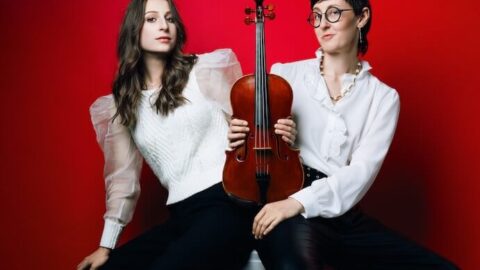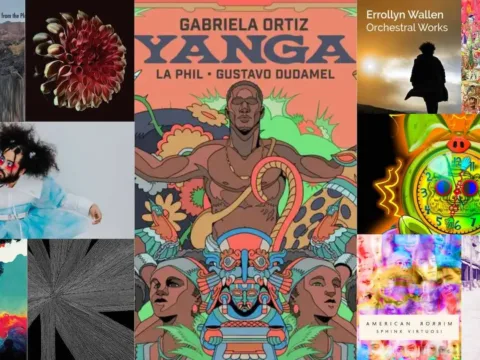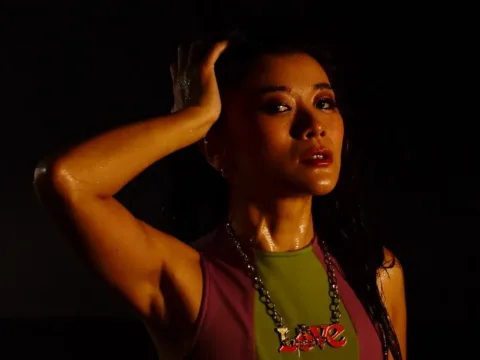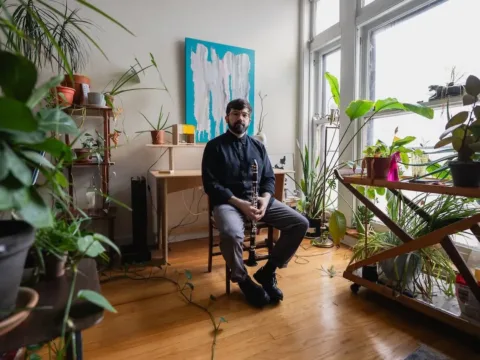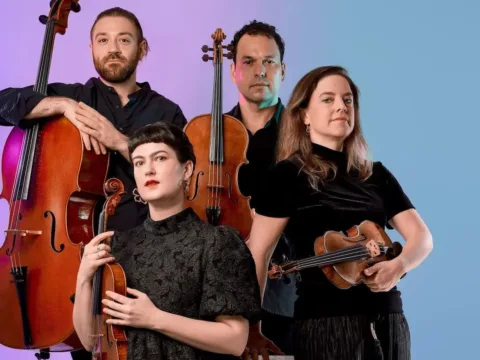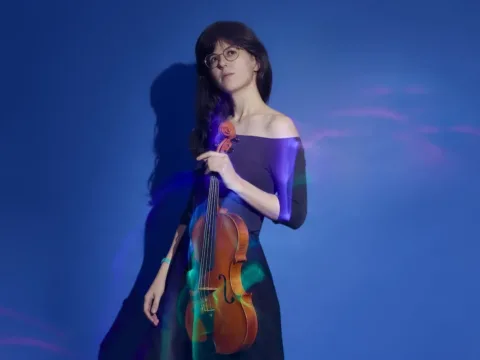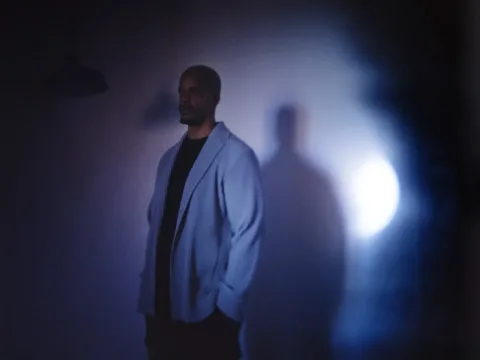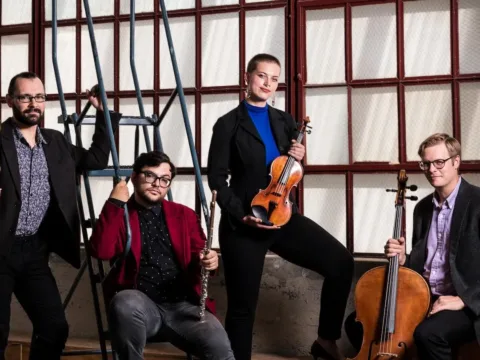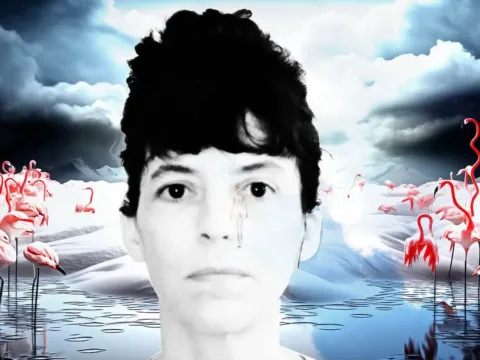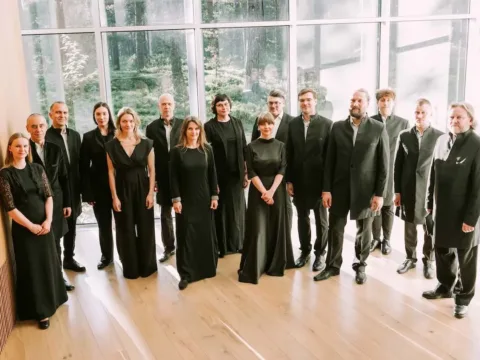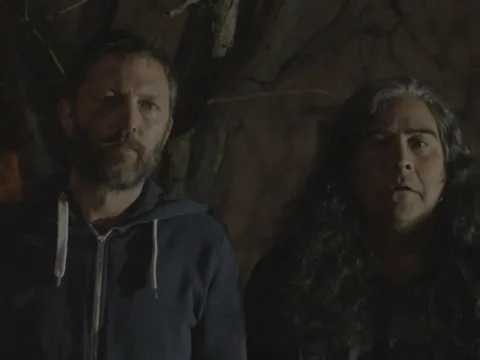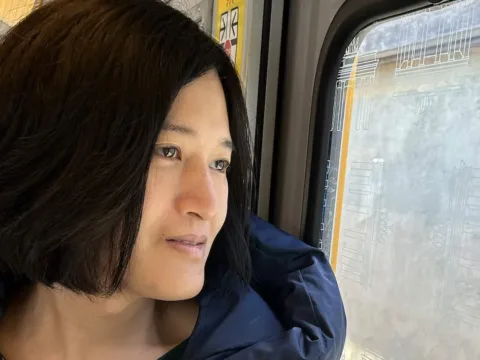Viola duo Tallā Rouge has it all – a dynamic and diverse repertoire, killer technique, and enough heart to make it all matter. Persian American and Cajun American violists Aria Cheregosha and Lauren Spaulding formed Tallā Rouge – which means “the Red-Gold” in Farsi and French – in 2020 during their studies with Roger Tapping at the Juilliard School. Since then, their accolades include a top-prize at the International Anton Rubinstein Chamber Music Competition and serving as the inaugural ensemble-in-residence at Dumbarton Oaks, the iconic Harvard research institute.
The duo’s debut album, Shapes in Collective Space (Sep. 20, Bright Shiny Things) follows threads of love, loss, wonderment, and reflection across works by Karl Mitze, Kian Ravaei, Gemma Peacocke, inti figgis-vizueta, Gala Flagello, Akshaya Avril Tucker, and Leilehua Lanzilotti. While each track on Shapes in Collective Space is approachable and compelling, it is Cheregosha and Spaulding’s flawless ensemble work and ecstatic collaborative energy that irresistibly draws the ear inward.
The album’s cover, created by Haeg Design, features an open-palmed hand illuminated by an otherworldly glow. Specks distort the image, resembling both infinitesimal particles of dust and the inconceivable grandiosity of the cosmos. This play between micro and macro, between the familiar and the unknown, is found not just in the exemplary cover art, but throughout the album as a whole.
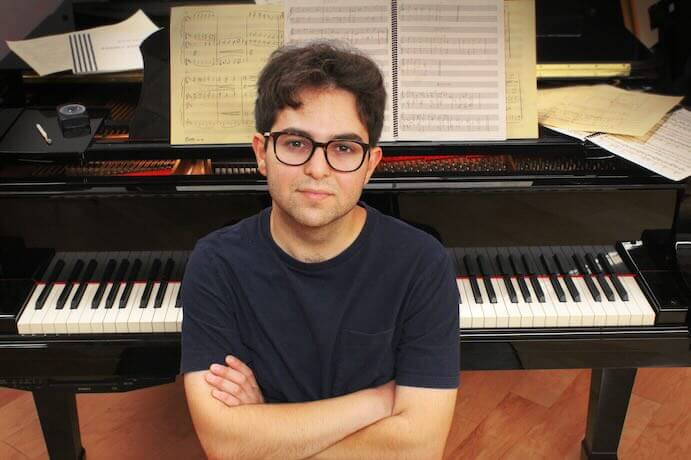
Sandwiched between the album’s six stand-alone tracks are movements from Ravaei’s four-movement work, Navazi. While the movements of Navazi have a lot of textural and motivic overlap, each track is just different enough to be satisfying and engaging on its own. The work is united by a sense of calm openness, one that is at once improvisatory and cohesive. The album benefits from this back-and-forth structure, as listeners can enjoy a brief respite between the larger works – a moment to pause, to reflect, to be present and mindful.
The first movement of Navazi – “Arise” – features gestural material set over a warm drone. Each phrase breathes with an effortless quality that feels both natural and meditative. There is a sense of awakening, of energy working its way out in long forgotten ways. In “Hide,” the backing drone is replaced with light strumming that quietly bristles with anticipation beneath the lithe melodies. “Rejoice” features embellished material that pangs with longing, while the return of the backing drone is punctuated by resolute bowings. The final movement – “Return” – captures a sense of wandering, as the material lilts with expansive gesture.
Right from the start, Seesaw by Mitze is brimming with verdant, youthful energy. Throughout the work, the violas trade arpeggiating and sustained material, entwined in a kind of imitative dance. While the music intensifies with pizzicati and chugging double-stops surging forth, it returns to the joyful, kinetic opening material before long.
Peacocke’s Fluorescein opens with a tremolo that builds through pulsing material split between the two violas; the interplay between quick tremolos and more deliberately accented passagework unfolds in a hypnotic dialogue. While there is a lot of motion to this work, its limited material also elicits a stark quality that suggests we may have remained stationary all along.
The wondrous and immersive soundscape in figgis-vizueta’s shapes in collective space moves like the ebb and flow of the sea, or the rising and falling of breath. At times, the violas pulse with lively arpeggiated material; at others, we’re awash in breathy, unpitched bow hairs pulled gently across strings. The result is a cohesive journey across time and space, one that dually evokes intimate nuance and the grand reality of our place in the universe.
With equal parts grooving minimalism and lyrical romanticism, Burn as Brightly by Flagello does just that: it shines forth with fervid motives that leap from the violas like sparks from a flame. Although the short work leaves little room for these motives to play out and for the energy to dissipate, there is a kind of purity in its brevity.

From the first notes of Tucker’s Breathing Sunlight, it’s clear that something is stirring. Like a bear waking up from a long winter slumber, the work gains a little bit of strength and a little more consciousness with each passing phrase. Before long, mewing glissandi spring to life amidst stumbling, then trampling rhythms. With ample time given to let this all unfurl – and the charismatic play between Cheregosha and Spaulding – Breathing Sunlight remains satisfying all the way through.
Like the specks of dust (or celestial bodies) on the album cover, Lanzilotti captures a feeling of suspension in the closing track, silhouette, mirror. Small musical gestures and granular textures fill this space, an amalgamation of muted tremolos, organ-like sustained pitches, and ricochet harmonics. Each fleck of material that emerges contributes to a quiet drama, at once suspenseful and sublime. Is the titular mirror reflecting a single person, as we cast our own silhouette upon it? In contemplating that image, we may feel very small in the grand scheme of things. Or, perhaps not, if you believe that we all carry a universe inside of us as we traverse this world, evanescent.
I CARE IF YOU LISTEN is an editorially-independent program of the American Composers Forum, and is made possible thanks to generous donor and institutional support. Opinions expressed are solely those of the author and may not represent the views of ICIYL or ACF.
You can support the work of ICIYL with a tax-deductible gift to ACF. For more on ACF, visit the “At ACF” section or composersforum.org.
